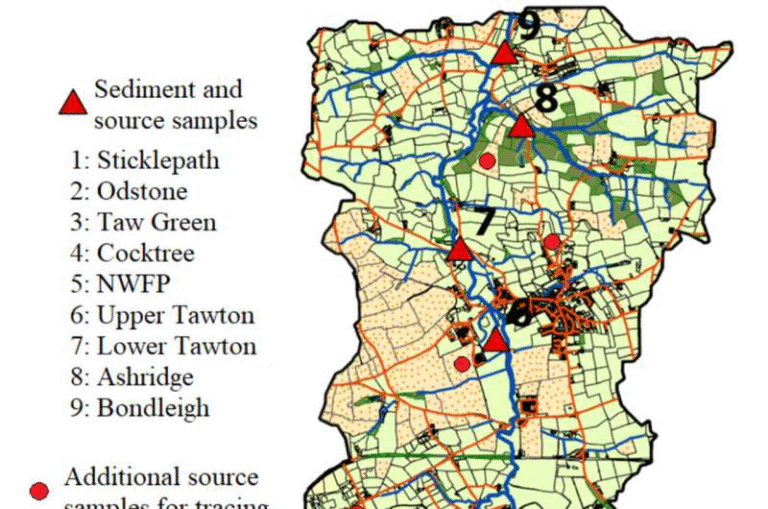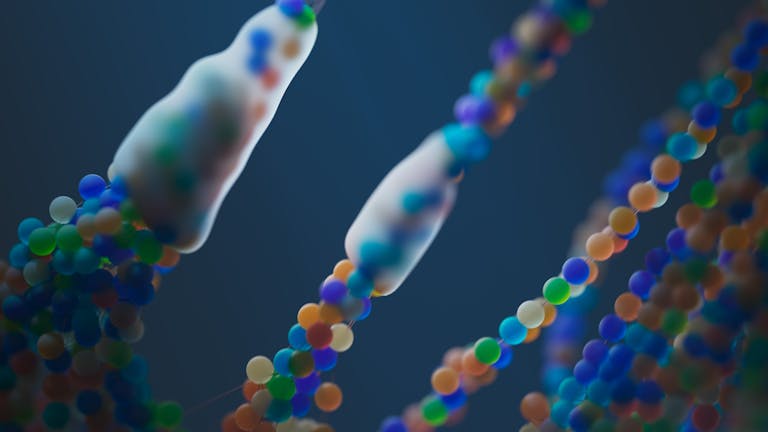Cancer Found To Accelerate Aging in the Body

Researchers have discovered that cancer itself—specifically B-cell lymphoma—can push the body into an accelerated state of aging, even before treatments like chemotherapy or radiation come into play. This new finding offers a deeper understanding of how cancer doesn’t just exist as a tumor in isolation but actively reshapes the biology of the body in a way that mimics premature aging.
How Cancer Alters the Immune System
The study, conducted by researchers at the Moffitt Cancer Center and published in Cancer Cell, focused on the effects of B-cell lymphoma.
Normally, aging of the immune system is a gradual process marked by reduced responsiveness, chronic inflammation, and weaker defense against infections. What the scientists observed was striking: lymphoma rapidly reprogrammed young T cells (the immune system’s front-line defenders) so that they began to look and behave like the T cells of much older individuals.
This shift was not subtle. The lymphoma-exposed T cells developed chronic inflammatory features, displayed protein regulation defects (a breakdown in proteostasis), and showed disruptions in iron balance. These hallmarks align with biological aging. Even more importantly, the changes were not confined to immune cells. Other organs, including the blood vessels, kidneys, and intestines, also showed clear signs of accelerated aging.
What Makes These Findings Different
For years, the blame for premature aging in cancer patients has been placed primarily on cancer treatments. Chemotherapy and radiation, for instance, are well known to damage DNA, accelerate cellular aging, and cause long-lasting side effects. But the new research demonstrates that the cancer itself is capable of pushing cells and tissues into an aged state—independent of treatment.
This changes the narrative. Instead of viewing aging in cancer patients solely as a side effect of therapy, we now have evidence that the disease alone can create a ripple effect across the body, altering cellular function far beyond the tumor site.
Key Biological Mechanisms Observed
The researchers identified several key mechanisms driving this accelerated aging:
- Iron accumulation: T cells exposed to lymphoma stored abnormal amounts of iron. This made them resistant to ferroptosis, a specific type of iron-dependent programmed cell death. While resistance to cell death may sound positive, it can actually be harmful because it allows dysfunctional, aged-like cells to linger.
- Proteostasis defects: Normally, cells have systems in place to ensure that proteins are folded and regulated correctly. In aged cells, this quality control declines. The study revealed that lymphoma pushes young T cells into this aged-like proteostasis failure, which is a recognized hallmark of aging.
- Epigenetic and chromatin reprogramming: At a genetic regulation level, lymphoma-exposed T cells showed widespread changes in chromatin accessibility and gene expression. These changes overlapped heavily with gene networks typically seen in aging, particularly those related to iron metabolism.
Age Plays a Critical Role
One particularly interesting detail is that young T cells were far more vulnerable to cancer-induced aging than already aged T cells. Researchers believe this difference is linked to epigenetic plasticity—the ability of younger cells to undergo large-scale changes in their gene expression programs. Since older T cells are already locked into an aged state, cancer does not push them much further.
This finding suggests that the age of the patient could influence how dramatically their immune system is affected by the presence of cancer, even before treatment starts.
Can Cancer-Driven Aging Be Reversed?
The study explored whether these changes are permanent or if the body can recover once the cancer is eliminated. Using animal models, the researchers removed tumors and then observed immune cell behavior. Encouragingly, some signs of aging did reverse. For example, immune responses like IFNγ production in young CD4+ T cells returned to healthier levels.
However, not all features bounced back. Iron accumulation and reduced endoplasmic reticulum function persisted even after tumors were removed. This means that while some cancer-induced aging is reversible, other aspects may become locked in, leading to long-term consequences even for patients in remission.
Why This Matters for Patients
The findings highlight an important point: cancer patients may experience aging symptoms not only because of treatments but also because of the cancer itself. This could explain why many people with cancer report symptoms that resemble aging—such as fatigue, organ dysfunction, or heightened inflammation—before they even begin therapy.

This also opens up a new way of thinking about treatment. If researchers can identify which aspects of cancer-driven aging are reversible, new therapies could be developed to protect the immune system during cancer progression or even restore youthful immune function after treatment.
Implications for Therapy
The study suggests several avenues for future therapies:
- Targeting iron metabolism: Since iron imbalance plays such a central role, drugs that modulate iron storage and usage in immune cells might counteract some aging effects.
- Improving proteostasis: Therapies that enhance protein quality control could restore healthier cellular function in immune cells damaged by cancer.
- Epigenetic interventions: Because younger T cells undergo dramatic epigenetic changes when exposed to cancer, drugs that stabilize or reverse these changes might protect the immune system.
There’s also an implication for adoptive T cell therapies like CAR-T. If cancer itself prematurely ages T cells, then reprogramming or “rejuvenating” T cells before they are used in therapy might improve patient outcomes.
The Broader Connection Between Cancer and Aging
This research fits into a bigger picture of what scientists call bidirectional crosstalk between cancer and aging:
- Aging increases cancer risk: As the immune system ages (a process known as immunosenescence), the body becomes less effective at detecting and destroying cancer cells. Chronic low-level inflammation, sometimes referred to as inflammaging, also creates an environment where tumors can thrive.
- Cancer accelerates aging: The new findings show the reverse is also true—cancer can speed up biological aging in immune cells and tissues.
This two-way relationship means that cancer and aging are not separate processes but are deeply interconnected.
What This Means for the Future of Research
The discovery raises several important questions for future work:
- Are these effects unique to B-cell lymphoma, or do other types of cancer also accelerate systemic aging?
- Which aging effects are reversible, and which remain fixed even after cancer treatment?
- Can therapies designed to slow aging processes (such as senolytics, iron modulators, or proteostasis-enhancing drugs) also benefit cancer patients?
- How do treatment effects (chemotherapy, radiation, immunotherapy) interact with cancer-driven aging?
Answering these questions will be critical not just for treating cancer, but also for improving long-term health span in survivors.
Background: What Are T Cells?
Since T cells are central to this study, it’s worth taking a closer look at what they are.
- T cells are a type of white blood cell and part of the adaptive immune system. They detect infected or abnormal cells and eliminate them.
- CD4+ helper T cells coordinate immune responses by signaling other cells, while CD8+ cytotoxic T cells directly kill infected or cancerous cells.
- As humans age, T cells naturally lose some of their effectiveness, contributing to increased vulnerability to infections, cancer, and reduced vaccine responses.
By showing that cancer accelerates these age-related defects, the study highlights just how intertwined immune health and cancer biology are.
Background: Why Iron Matters in Aging and Cancer
Iron might not be the first thing most people associate with aging, but it plays a major role.
- In healthy cells, iron is tightly regulated. Too much iron leads to oxidative stress, damaging DNA, proteins, and cellular membranes.
- Ferroptosis, a form of programmed cell death triggered by iron, normally helps the body eliminate damaged cells. But if cells become resistant to ferroptosis (as the lymphoma-exposed T cells did), they may survive in a dysfunctional, aged-like state.
- Excess iron has been linked to neurodegeneration, cardiovascular disease, and other age-related conditions. This makes it a critical link between cancer, aging, and overall health.
Funding and Research Details
This work was supported by the National Institutes of Health, the Leukemia and Lymphoma Society, and the Florida Department of Health. The collaboration involved multiple researchers, including Rebecca Hesterberg (lead author) and John Cleveland (senior author and chief scientific officer at Moffitt).
Final Thoughts
The discovery that cancer can accelerate biological aging of the immune system and organs—even without treatment—changes how we think about the disease. It underscores that cancer is not just about tumor growth but about systemic changes that ripple across the body.
While some of these aging effects may be reversible after cancer is cleared, others seem to persist, raising important challenges for patient care and survivorship. At the same time, this opens exciting new opportunities for therapies that not only fight cancer but also protect the body’s resilience against aging.
Research Paper Reference
Lymphoma accelerates T cell and tissue aging – Cancer Cell (August 2025)





